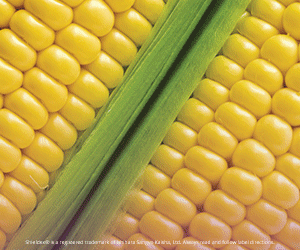Future of grain
HIGHLIGHTING THE LATEST TECHNOLOGY IN GRAIN PRODUCTION AND UTILIZATION
Canadian approval of Optimum GAT
Corn and soybean farmers now have another option in their herbicide tolerance shopping cart. DuPont recently gained full Canadian regulatory approval of its herbicide tolerance trait, OptimumTM GATTM.
“The OptimumTM GATTM trait combined with our industry-leading genetics and other complementary technologies will help growers maximize yields and allow noticeably cleaner fields through harvest,” said Paul E. Schickler, vice president and general manager of DuPont and president of Pioneer Hi-Bred. “The Canadian regulatory approval of the OptimumTM GATTM trait in corn and soybeans brings Pioneer closer to offering more technologies to farmers’ fields.”
According to the company, this is the first-ever agricultural trait developed through proprietary DuPont gene shuffling technology. The trait will enable new herbicide options that will provide broader spectrum weed control without compromising crop safety. •
Glue from corn
“Leftover” corn germ meal resulting from the corn oil extraction process may have an additional value-added market reports the Agricultural Research Service, the U.S. Department of Agriculture’s chief scientific research agency.
The corn germ, which is often marketed to the feed market for poultry and other livestock, can be used as a protein extender for plywood glues. Milagros Hojilla-Evangelista, a chemist at the ARS’ Plant Polymer Research Unit, has been working on expanding the list of agricultural extenders in order to give glue manufacturers more alternatives.
According to the ARS, “glue extenders reduce the amount of main binder, or resin, used in glues and enhance their adhesive action” and they are typically made from wheat flour. •
Steps closer to better wheat grading technology
Farmers are a step closer to seeing less subjective wheat grading technology. The Canadian Grain Commission (CGC) recently announced that it is launching the second phase of an industry-based pilot to test the latest development in Rapid Visco Analysis (RVA) technology. The technology is used to assess sprout damage in wheat. As part of the pilot, the CGC will distribute RVA-Starch Master2 units, special grinders and robotic dispensers to grain industry participants.
“The Canadian Grain Commission is committed to looking at promising technologies and seeing how they could apply to the Canadian grain industry,” says Elwin Hermanson, Chief Commissioner of the Canadian Grain Commission. “RVA technology could affect grain grading. We’re also evaluating it as part of our commitment to provide producers with value by ensuring they get paid accurately and fairly for their grain deliveries.”
Recently, the Ontario Wheat Board funded two projects aimed at wheat grading technology. The future is looking promising for better grading tests. •







